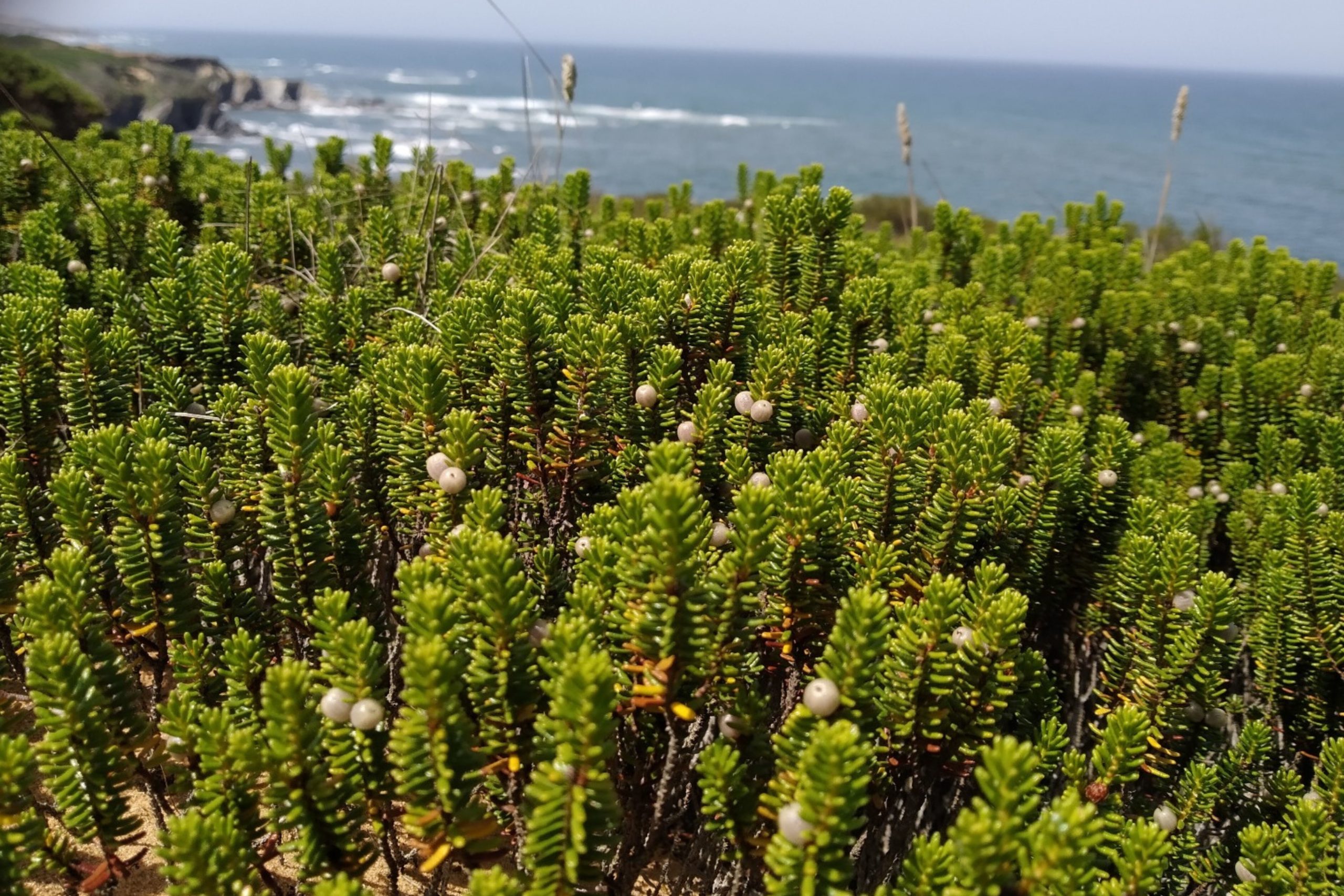Case study
Annotating the Corema album Genome: A Step Toward Coastal Ecosystem Conservation
Researchers launched a groundbreaking project to improve the genomic annotation of the white crowberry (Corema album). This initiative seeks to deepen our understanding of this essential coastal plant species and address its conservation needs amid changing environmental conditions.
Annotating the Corema album Genome: A Step Toward Coastal Ecosystem Conservation
Manuela Sim-Sim, Helena Trindade, Vítor Sousa, Carla Alegria and João Jacinto are members of the Corema genome team for the ERGA pilot project. Additionally, Vítor Sousa participates in the Data Analysis Committee and is also a member of the ERGA Council of Country Representatives. Manuela Sim-Sim, Vítor Sousa and Bruno Nevado are leaders of CE3C’s research groups Natural History Collections & Systematics (NHC&S), Evolutionary Genomics and Bioinformatics (EGB), and Speciation Genomics (SG), respectively, and Helena Trindade, Carla Alegria and João Jacinto (PhD student) are members of CE3C’s Plant Functional Ecology research group.
In June 2024, researchers from the Centre for Ecology, Evolution, and Environmental Changes (CE3C) at the Faculty of Sciences, University of Lisbon, Portugal, in partnership with Biodiversity Genomics Europe (BGE), launched a groundbreaking project to improve the genomic annotation of the white crowberry (Corema album). This initiative seeks to deepen our understanding of this essential coastal plant species and address its conservation needs amid changing environmental conditions.
Corema album ssp. album is an Iberian Peninsula endemic species with a recognised ecological value in its natural habitat. This dioecious perennial woody shrub is a key structural species of the dune systems and is only found in the Iberian Peninsula’s coastal dunes and pine tree forests. Its habitat holds a priority conservation status under Council Directive 92/43/EEC. Due to anthropogenic pressures and climate change, C. album populations are declining, particularly populations inhabiting the southern limit of the distribution range, and the species is listed as a conservation concern in PROGEN by ICNF.
Close-up of a female Corema album plant bearing fruits. Photo credit: Carla Alegria
The main target of this project is to produce a high-quality reference genome for Corema album, included in the ERGA Pilot Project, by conducting RNA sequencing (RNA-seq) on multiple tissues from both male and female plants. This effort will help annotate the reference genome, providing comprehensive insights into the species’ genetic diversity and adaptation mechanisms. Studying both male and female C. album plants is crucial due to its dioecious nature, which is essential for understanding sex-based genetic diversity.
A well-annotated reference genome will enable researchers to better understand the genetic basis of Corema album’s adaptation to its coastal habitat, particularly aridity. By enhancing the genomic understanding of Corema album, this project aims to contribute significantly to the conservation of coastal dune ecosystems, ensuring their resilience and sustainability for future generations. This project also highlights the broader importance of genomics in biodiversity conservation, potentially guiding conservation strategies for other species in similar habitats.
Leading this endeavour is Manuela Sim-Sim and a dedicated team of researchers, including Helena Trindade, Vítor Sousa, Bruno Nevado, Carla Alegria and João Jacinto, combining expertise in systematics, taxonomy, genetics, molecular biology, bioinformatics, and ecology, actively participating in both ERGA and the Genome Team of the pilot project. By bringing together a diverse team and leveraging cutting-edge genomic techniques, this initiative represents a significant step toward integrating genomic data into effective conservation strategies, safeguarding the biodiversity of coastal dune ecosystems.
This project has received funding from the European Union under the European Union’s Horizon Europe research and innovation programme, co-funded by the Swiss Government and the British Government, with additional support from CE3C’s FCT Unit funding UIDB/00329/2020 (https://doi.org/10.54499/UIDB/00329/2020).
By integrating genomic data into conservation efforts, this project aims to pave the way for more informed and effective strategies to protect and sustain biodiversity in coastal ecosystems.
Header image: Corema album population over the cliffs of Vila Nova de Milfontes, Portugal. Photo credit: João Jacinto




